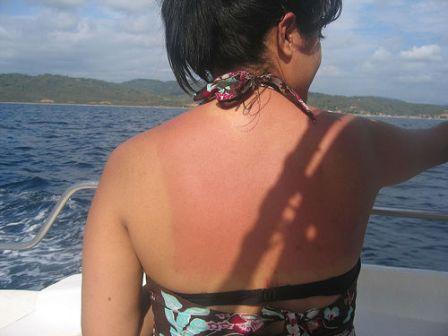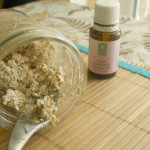
Each year The Environmental Working Group (EWG) publishes their Sunscreen Guide. The guide is a round-up of the best in several categories of sunscreen; Best Beach & Sport Sunscreens, Best Lip Balms with SPF, Best Moisturizers with SPF, and Best Makeup with SPF. The sunscreens are also listed as mineral or non-mineral, and the guide includes the worst of the worst in their Hall of Shame.
EWG’s Sunscreen Guide is packed full of helpful information and great product recommendations. The guide also contains some sunscreens that most natural beauty experts (myself included) would not recommend their readers use. This discrepancy is due to a few main factors:
First, EWG ranks sunscreens by effectiveness first. This means that the UVA/UVB protection is their top priority in selecting the “best” sunscreens, over safety of ingredients. So, while EWG’s Skin Deep database may rank an ingredient as a high hazard, a sunscreen containing this same ingredient may top one of their “best of” lists in the Sunscreen Guide because the product offers high UV protection.
Fragrance also plays a role in how well sunscreens rank in the guide. Unscented sunscreens usually receive better rankings than those with fragrance, even if the unscented sunscreen is less “natural” than the scented one. This is because the term “fragrance” on a product label can determine both synthetic and natural fragrance ingredients, to protect trademark scents. EWG ranks any “fragrance” as an “8” (with 1 being lowest, 10 being highest hazard), whether natural or not.
Then there is the inhalable mineral issue. Powder and spray mineral sunscreens don’t receive quite as good marks in the Sunscreen Guide because of potential inhalation risks. We have to keep in mind that a lotion spray is not airborne and does not pose the same threat as a powder. That said, I do use a mineral sunscreen facial powder regularly and feel it is safe.
How Best to Use EWG’s Sunscreen Guide
Again, EWG’s Sunscreen Guide is meant as a resource to help consumers choose the safest sunscreen products for themselves and their families. The guide is very thorough and contains lots and lots of products to choose from.
My advice: as with all cosmetic and personal care products, read your labels. Look for ingredients from the Ingredients to Avoid list and avoid chemical sunscreens. If one of your favorite natural brands gets a poor ranking on the list, or a main stream brand seems to rank a little too well, do some investigating and ask questions. Leave a comment below or send me an email – liz(at)organicbeautysource(dot)com — if you’d like to check on an ingredient or product. EWG works very hard to bring clarity to the very foggy area of cosmetics, but it is a big job and, at this point, we still need to protect ourselves.
Stop back next week when I will share my own sunscreen review for the season.
[Image via jeanieforever at Flickr.com, Creative Commons license]


One Comment